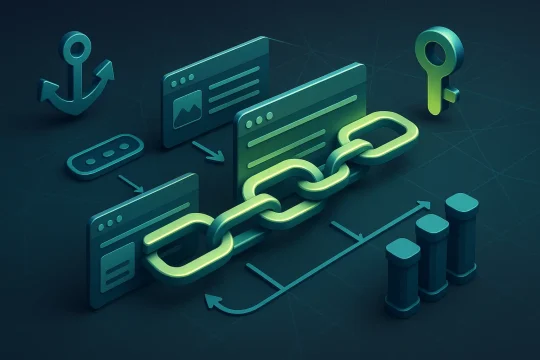A Strategic Guide to Internal Linking for SEO
Take advantage of your site’s own pages. Our strategy guide reveals how smart internal linking directs authority, shows what’s relevant, and lifts your rankings up the ladder.
Read more
7 years working in cyberspace, and I still wind the same thread: I began with code, not with armor. Those first years, I was all front-end glamour, spinning buttons and drop-downs. Then I looked once too often at the line I’d threaded with an anxious semicolon, the one with the gaping flaw, and realized the iceberg sits far below the glittery surface. I drifted from styling divs to governing the silent alleys of A, B, and C, the dance of routers, packets, and TLS handshakes—the choreography that invisible credentials perform. A particular dance still haunts me, the one that curves the checksum inside an SSL cert and drums the heartbeat of an HTTP request. Mixed content, the villain sneering from the shadows, still slides from module to module like an inside man. I’ll always hear the screech of that midnight server bell—an e-merchant’s voice wavering as credit carts crash like chrome glass, money seeping out by the second through a cryptosized breach I’d not dreamed possible. A tracking pixel—no bigger than a dust mote—got in, served everything with an insecure thumb, and the checkout page wrote its own obituary. I reverse-queened the line of script, spun a gauntlet of Content Security Policy headers around it, and the digital breach healed as quietly as dawn. I slept well that night, grassed with glory. From that second I promised: the quiet victories of safeguarding pixels and packets are where the real craft begins.
My hands-on experience started on a sturdy base of education and industry practice. A Bachelor of Science in Computer Science gave me the theoretical poster for the systems I now shield. Going deeper, I dived into focused training, later stacking certifications on that base. Notably, the Certified Web Security & Encryption Professional and the Advanced TLS/SSL Implementation Specialist stand out, sharpening my focus on online security. Here are the skills I carry with me from classroom to company, step by step:
I’m convinced that true expertise shines brightest when it’s passed on. I routinely share what I’ve learned to make the online world safer. I pen columns and deep-dive studies for big names like Search Engine Journal and the Ahrefs Blog. There, I turn tough security ideas into clear, step-by-step advice that any developer can use.
Outside of the tutorials and articles, I’ve also gotten the chance to stand on the stage at big tech meet-ups, like BrightonSEO, and demo real security tricks in front of the crowd. Leading workshops at Web Summit was a blast, too. Together, we rolled up our sleeves, clicked through dashboards, and fine-tuned defenses, making sure everyone left knowing how to shield their web assets like a pro.
I live by one rule: a safe web is a web that everyone loves to use. My job is to pull back the curtain on the tech parts that make people nervous, so designers, copywriters, and business owners can confidently create sites that don’t just look good, but truly serve their users. In this and every article I publish, I promise to deliver guidance that is clear, honest, and backed by data you can trust. I don’t just want you to solve the glitch of the day; I want you to walk away with the blueprint and the know-how to stop the same glitch from ever knocking on your door again, so the web grows stronger by the day.
Take advantage of your site’s own pages. Our strategy guide reveals how smart internal linking directs authority, shows what’s relevant, and lifts your rankings up the ladder.
Read more
